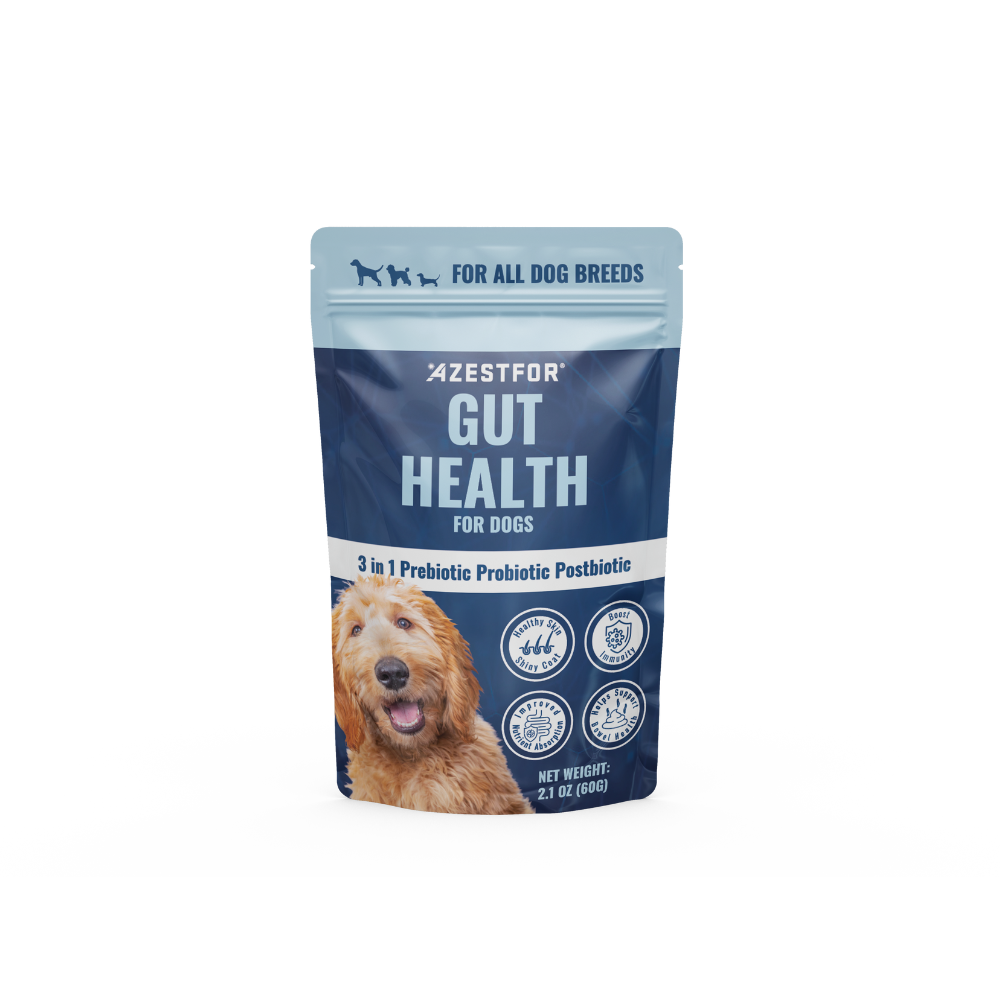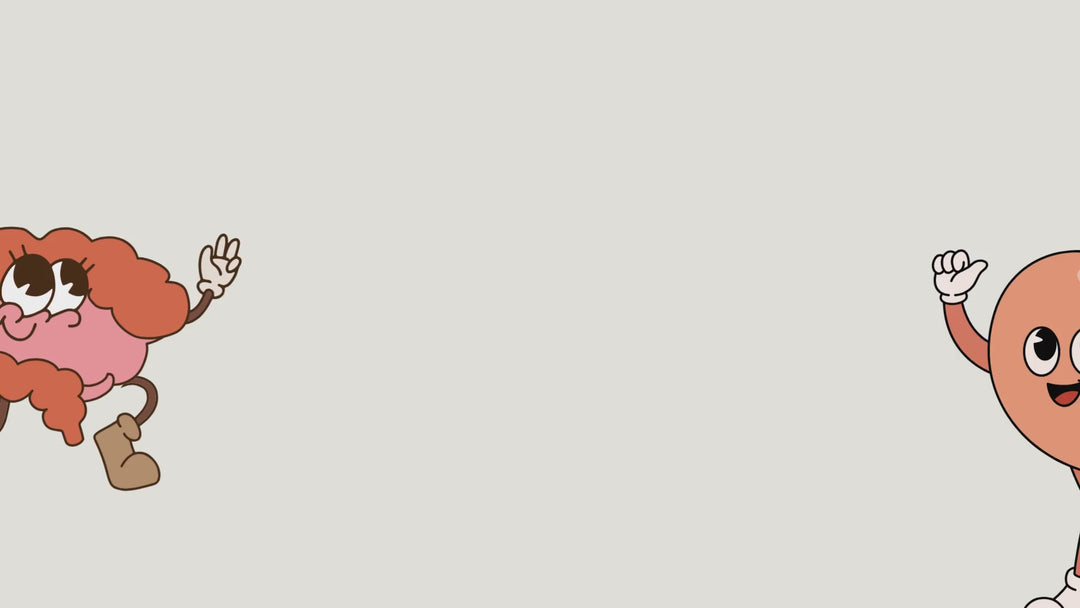Dog Poop: Providing clues to your dog's health
Owning a dog and looking after them not only means feeding and giving him love, but it also means that you have to make sure your pet is in perfect health. And one way to know if our dog is healthy is by checking out his poop. Your dog’s poop can provide clues on your dog’s health and changes in the poop’s color, consistency, size, shape, volume, frequency, and contents may be signal a variety of health problems:
Find out in this article how often a dog should poop a day, what healthy dog poop looks like, what black poop means and what the best dog food for less poop is.
Color and consistency
Healthy dog poop is medium brown or yellowish brown in color and is compact, moist and easy to pick from the grass [2,8]. Abnormal stool color could simply be because of your dog’s diet (he ate something that affected his stool color) [2]. Try to trace it to a difference in diet or a treat you gave him/her during the past 24 hours [1]. The change in your dog’s stool could also indicate a more serious problem [2].Poop that changes color or otherwise looks odd may signal a variety of problems depending on the color and consistency: [7]
- Dark brown or black dog poop
Black or dark brown poop can indicate bleeding (either swallowed blood or bleeding from the intestinal tract). Causes of this kind of bleeding include tumor, an ulcer, kidney or liver problems, or inflammatory bowel disease. Other possible causes can include parasites, a bleeding tooth, bleeding in the mouth, dental disease, or swallowing the blood that results from an overlicked paw. [7]
- Grayish, greasy looking poop
Exocrine pancreas insufficiency can be suspected in dogs with this kind of poop. The poop will have a consistency of cow feces [7]. Aside from the color and consistency the dog also has diarrhea and will defecate more than 3x per day [10]. The condition occurs when the dog’s pancreas doesn’t produce enough enzymes to process the fats in his food. Other causes of gray poop include a tumor or inflammation of the pancreas (pancreatitis). [7]
Shape
Healthy dog poop is shaped like well-formed logs [3, 12. If your dog’s poop is round shaped, then your dog may be dehydrated [3].Rectal or anal strictures which result from inflammatory disease (perianal fistula, anal sac disease, or anorectal trauma) can also cause a change in the shape of the feces. A dog with strictures in his rectum or anus will also have difficulty and pain when he poops and you may also see fresh blood on his poop. [9]Dogs with prostate cancer will have altered stool shape which is flattened or ribbonlike. You then might also observe other clinical signs such as blood in the urine, and straining when trying to defecate. [15]
Size
Stool size should always be appropriate to the size of the dog. So if your big Labrador is defecating tiny bits of feces, then this is a cause for concern. [1]
How Many Times Should Dogs Poop a Day?
Normally, adult dogs poop once or twice a day [12]. If your dog is having less than 1 bowel movement in 24 hours means that he is constipated. It can be classified as mild to moderate constipation if your dog defecates only once every 2 days, especially if the stools are hard, dry and expelled as individual pellets. [6]
What are the causes of constipation in dogs?
Infrequent and often difficult defecation can be caused by: [11]
- dietary causes (swallowed bones, hair, or foreign material
- too much fiber in the diet
- inadequate water intake
- environmental causes (lack of exercise, change in environment, inability to move freely around)
- intake of certain drugs (e.g. antihistamines, sucralfate, antacids, iron supplements, diuretics).
Diarrhea in Dogs
Diarrhea occurs when a dog has an abnormally frequent defecation and there is an increased fluid content of the stool (soft or fluid). It can either be acute (abrupt or sudden onset) or chronic (occurs for >3 weeks).Acute diarrhea can be caused by: [10, 14]
- Systemic illness
- Ingestion of garbage, non-food materials, or spoiled food
- Abrupt changes in the food
- Dietary intolerance
- Metabolic diseases (Addison’s disease, liver disease, kidney disease, and pancreatic disease)
- Obstruction or foreign bodies
- Hemorrhagic gastroenteritis
- Viral causes (Canine parvovirus, coronavirus, rotavirus, canine distemper virus)
- Bacterial causes (Salmonella, Campylobacter, Clostridium spp., Escherichia coli, etc.)
- Parasites (hookworms, ascarids, whipworms, strongyles, and flatworms)
- Protozoa (Giardia, coccidian, and Entamoeba)
- Rickettsia
- Drugs and toxins (heavy metals like lead, organophosphates, NSAIDs, steroids, antimicrobials, anthelmintics, antineoplastic agents, lawn and garden products, etc.)
Dog Poop Chart
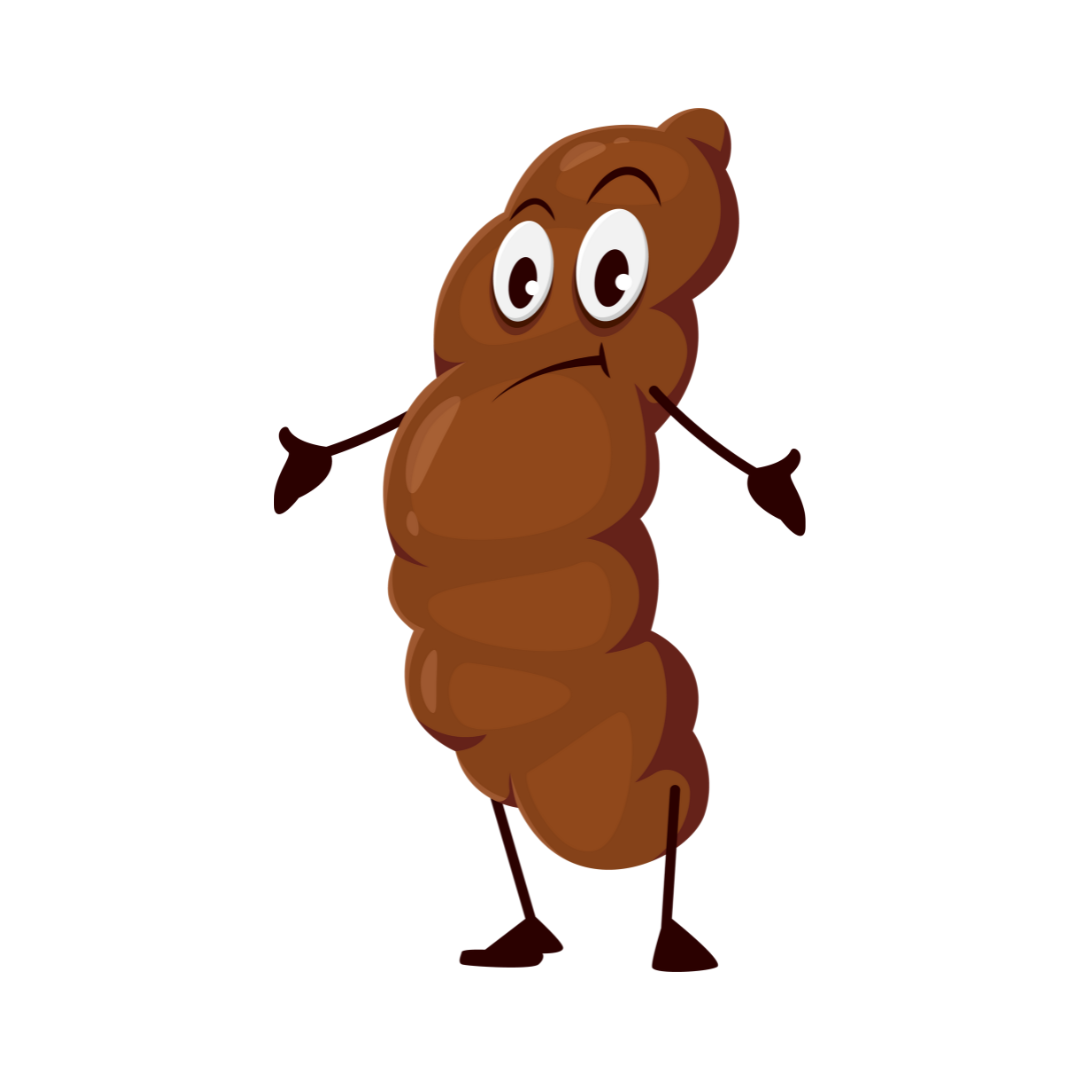
Healthy Dog Poop
Slightly moist, firm to pick up well formed log shape. Appropriate for the size of dog. Dog poop is a signal as to the dogs diet and overall wellbeing. Ideal poop is light to dark brown in color.

Dry Hard Pellets
The dog may not be consuming adequate water or is eating too much starchy carbohydrates
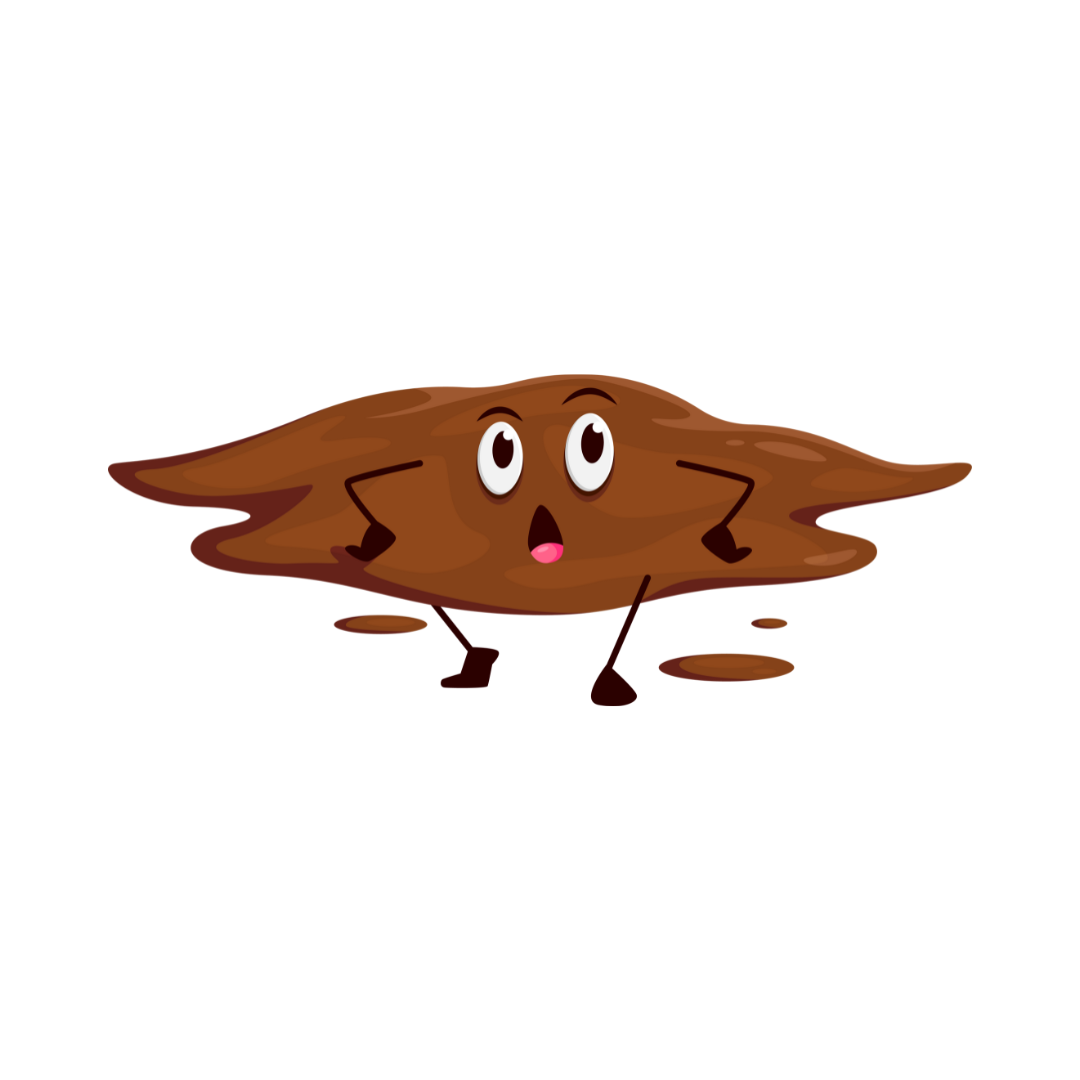
Loose Stool
A runny loose stool or stool with a foul odor is a sign of digestive upset.
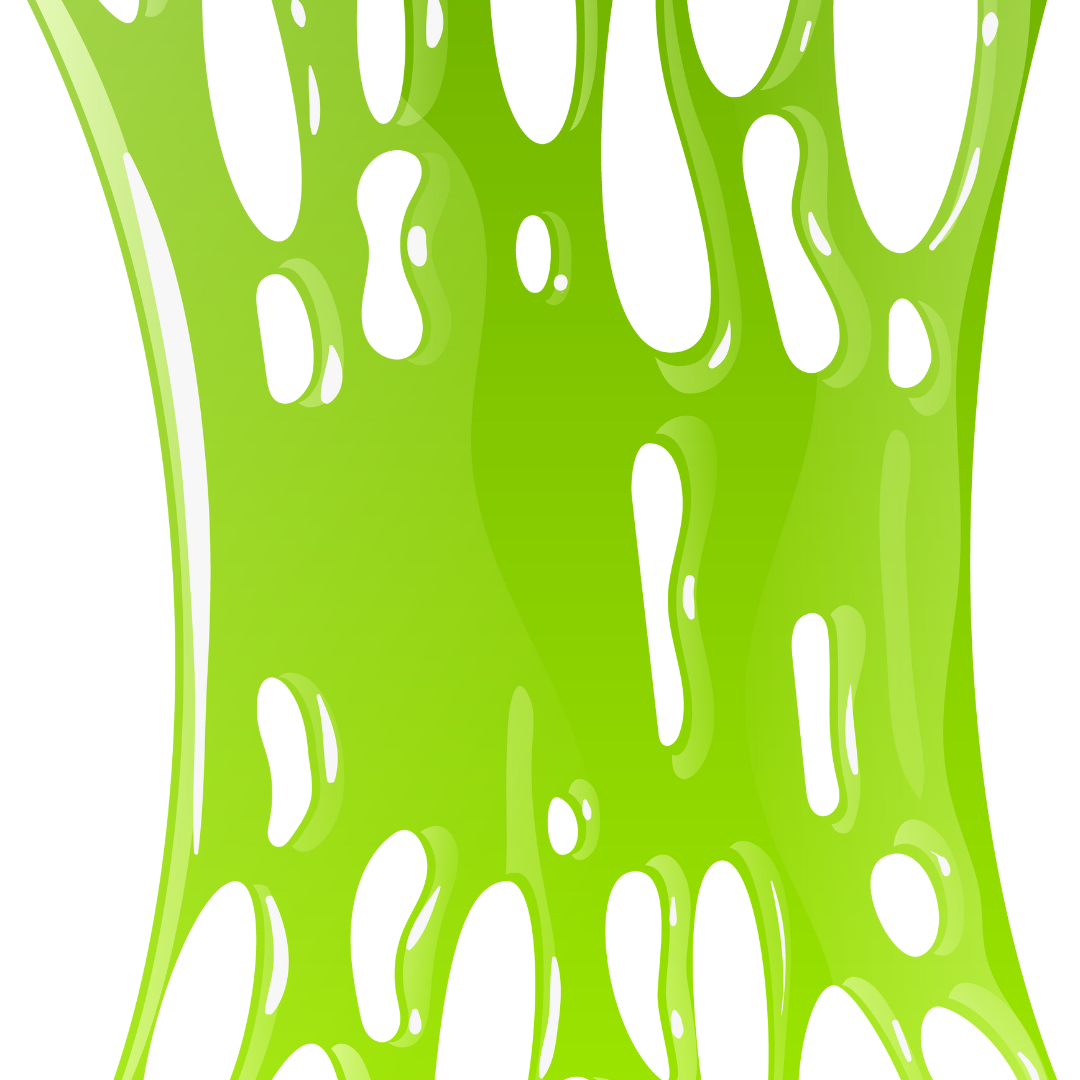
Mucus in Dog Poop
If there is mucus coating the dogs stool it may be a signal that the dog's digestive system is having a hard time breaking down the food. The solution is to ensure that the starch is very well cooked. It may also be caused by Parasites, Food Intolerances or Bacterial Infections.
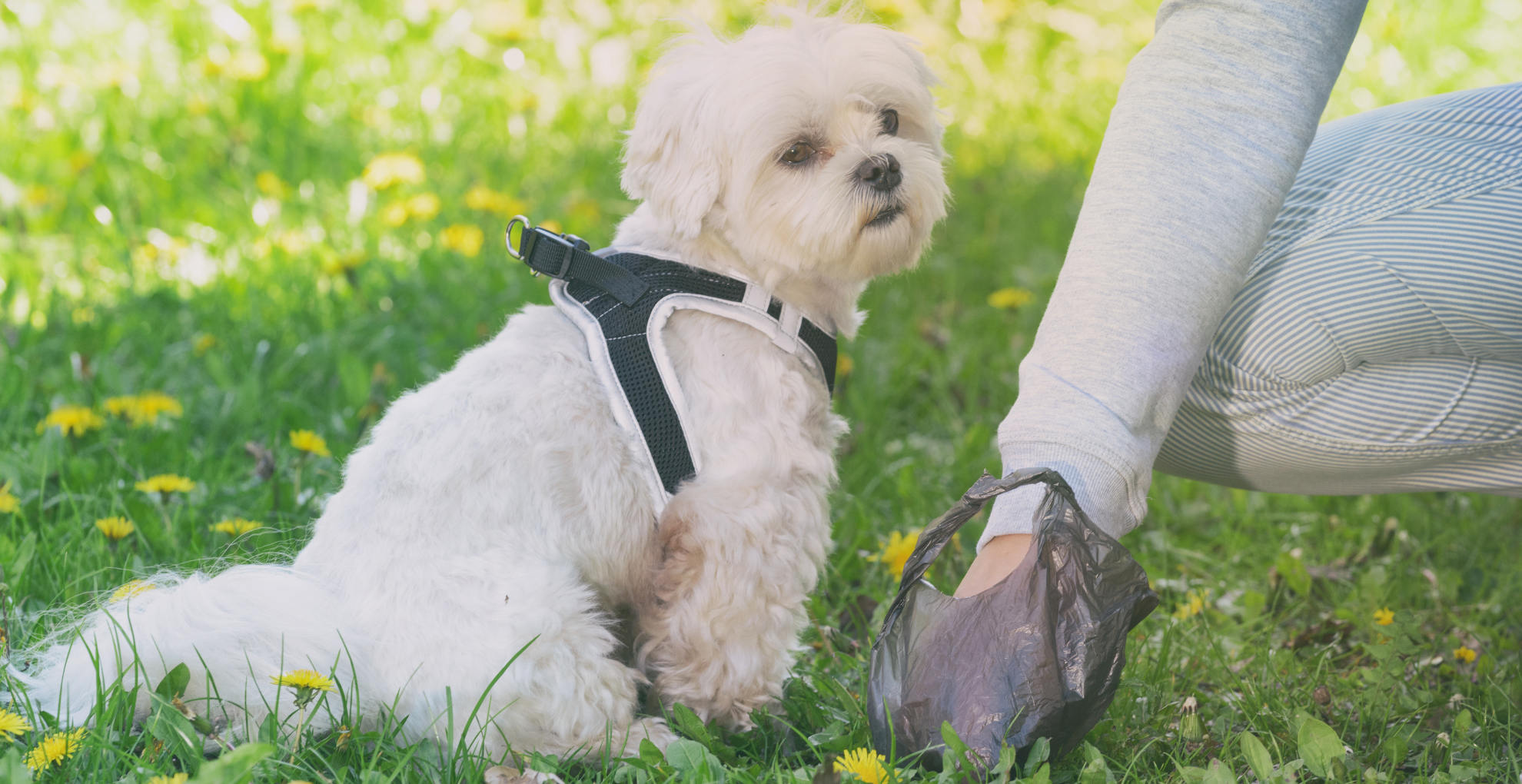
Chronic Diarrhea
Chronic diarrhea can originate from the small intestine (small bowel diarrhea) or the large intestine (large bowel diarrhea). In the case of small bowel diarrhea, the volume of feces is larger than normal, there is mild to moderate increase in frequency of pooping (2-4 times per day), weight loss, increased appetite/food intake, no fresh blood or mucus on the feces, no pain or straining when pooping, there may be gas and rumbling of the stomach, and there is vomiting in some dogs. [14]
For diarrhea that originates from the large intestine, there is smaller than normal volume of feces per defecation, increased frequency of defecation vs. normal (> 4 times per day), no weight loss, no dark or tarry feces seen, there is straining and urgency during pooping, and vomiting is not common. [14]
Causes of chronic small intestine diarrhea include:[14]
- inflammatory bowel diseases
- tumors
- infection-(e.g. histoplasmosis, Salmonella spp., Clostridium perfringens, and pythiosis)
- parasites-small bowel diarrhea (Giardia, Toxocara spp., Ancylostoma caninum , and A. strongyloides)
- partial obstruction (e.g. foreign body, intussusceptions, and tumors)
- small intestinal bacterial overgrowth
- ulcers in the stomach and intestine
- dietary intolerance or allergy
Causes of chronic large intestine diarrhea are:[14]
- inflammatory bowel diseases
- tumors
- infection-(e.g. histoplasmosis, Salmonella spp., Clostridium perfringens, Campylobacter jejuni, Prototheca and pythiosis)
- parasites-large bowel diarrhea (Giardia, Trichuris vulpis, Ancylostoma caninum, Entamoeba histolytica, and Balantidium coli
- Non-inflammatory causes
- Diet (dietary indiscretion, diet changes and foreign material like bones or hair)
- Fiber
- Irritable bowel syndrome
- Metabolic disorders (uremia, hypoadrenocorticism, toxins, drug administration)
- Contents or presence of blood, mucus or parasites
What if my dog has mucus in the poop?
If there is mucus (looks like clear jelly) in the stool, it is probable that your dog may be affected with:
- Large bowel diarrhea
- Giardia
Giardia is a protozoa that can infect the intestine of dogs. Pets get the parasite from contaminated water. Signs of Giardia infection include loose, mucus-coated stools; vomiting; bloating; and weight loss. Bring your pet for treatment as soon as you notice symptoms. [5]
Whipworm infection
Whipworm infection can produce mucus-coated or bloody dog poop; a dry, brittle coat; smelly diarrhea; and a major appetite. There may also be vomiting, anemia, and/or no appetite. [5]
Blood in Dog Poop
Blood in the feces can be described as melena or hematochezia. Melena is when the dog poop is black and tarry resulting from digested blood. This digested blood may come from the pharynx, lungs, esophagus, stomach or upper intestine. It becomes tarry because bacteria break down the haemoglobin in the blood.[13] Hookworm infection can cause dark, tarry stools [14]Hematochezia is when you can see bright-red blood (fresh blood) on the stool which comes from the anus, rectum or descending colon. Causes of bright-red blood on the feces include rectal polyps (stool is formed with blood on the surface), or some type of inflammatory or irritative disorder [13]. Fresh blood on the poop can be seen in disease conditions such as IBD (Inflammatory Bowel Disease), tumors in the colon and rectum, Leptospirosis, colitis (inflammation of the colon), and irritable bowel syndrome (rare). [9]
Parasites
Tapeworm looks like grains of rice in your dog’s stool. You can also observe your dog scooting. Dogs get the parasite by eating fleas, which are the tapeworms’ intermediate hosts.
As a pet owner, it is always best to pay attention to your dog—and their poop. If you spot changes in your dog’s poop that persist for three days or more, it is best to inform your vet to determine if your dog has a health problem and treatment can be given.
Fresh is the Best Dog Food for Less Poop
Better Dog Food = Less Poop
The best dog food for healthy and nearly odorless waste is fresh homemade dog food that you make yourself in your own kitchen. Fresh dog food is more bio-available meaning the dog is able to absorb more nutrients and creates less waste. Make fresh complete and balanced dog food with Azestfor Vitamin Mineral Premix
References:
- Bricklin, Mark. Pets, Part of the Family: The Total Care Guide for All the Pets in Your Life. Rodale,1999.
- Copeland, Susan and Hamil, John A. Doral Publishings Hands-On Dog Care: The Complete Book of Canine First Aid. Bottom of Form i5 Publishing, 2012.
- Donovan, Liz. “What Your Dog’s Poop Says About His Health”. http://www.akc.org/content/dog-care/articles/what-your-dogs-poop-says-about-his-health/, 2015.
- Ewing, Susan M. Poodles For Dummies. Wiley, 2007.
- Hodgson, Sarah. Puppies For Dummies. John Wiley & Sons, 2019.
- Laflamme, Dottie. Nutrition, An Issue of Veterinary Clinics of North America: Small Animal Practice. Elsevier Health Sciences, 2014.
- McCullough, Susan. Senior Dogs for Dummies. John Wiley & Sons, 2011.
- Ritland, Mike and Brozek, Gary. Team Dog: How to Train Your Dog--the Navy SEAL Way. Penguin, 2015.
- Schaer, Michael. Clinical Signs in Small Animal Medicine. CRC Press, 2008.
- Schenck, Patricia. Home-Prepared Dog and Cat Diets. John Wiley & Sons, 2011.
- Smith, Francis W. K. Blackwell's Five-Minute Veterinary Consult: Canine and Feline. John Wiley & Sons, 2015.
- Smith, John. Healthy Dog Food, Health and Training. Lulu Press, Inc, 2015.
- Tams, Todd R. Handbook of Small Animal Gastroenterology. Elsevier Health Sciences, 2003.
- Tilley, Larry Patrick and Smith, Francis W.K. The 5-Minute Veterinary Consult: Canine and Feline, 3rd ed. Lippincott Williams & Wilkins, 2004.
- Withrow, Stephen J; Vail, David M; Page, Rodney L. Withrow and MacEwen's Small Animal Clinical Oncology. Elsevier Health Sciences, 2013.





